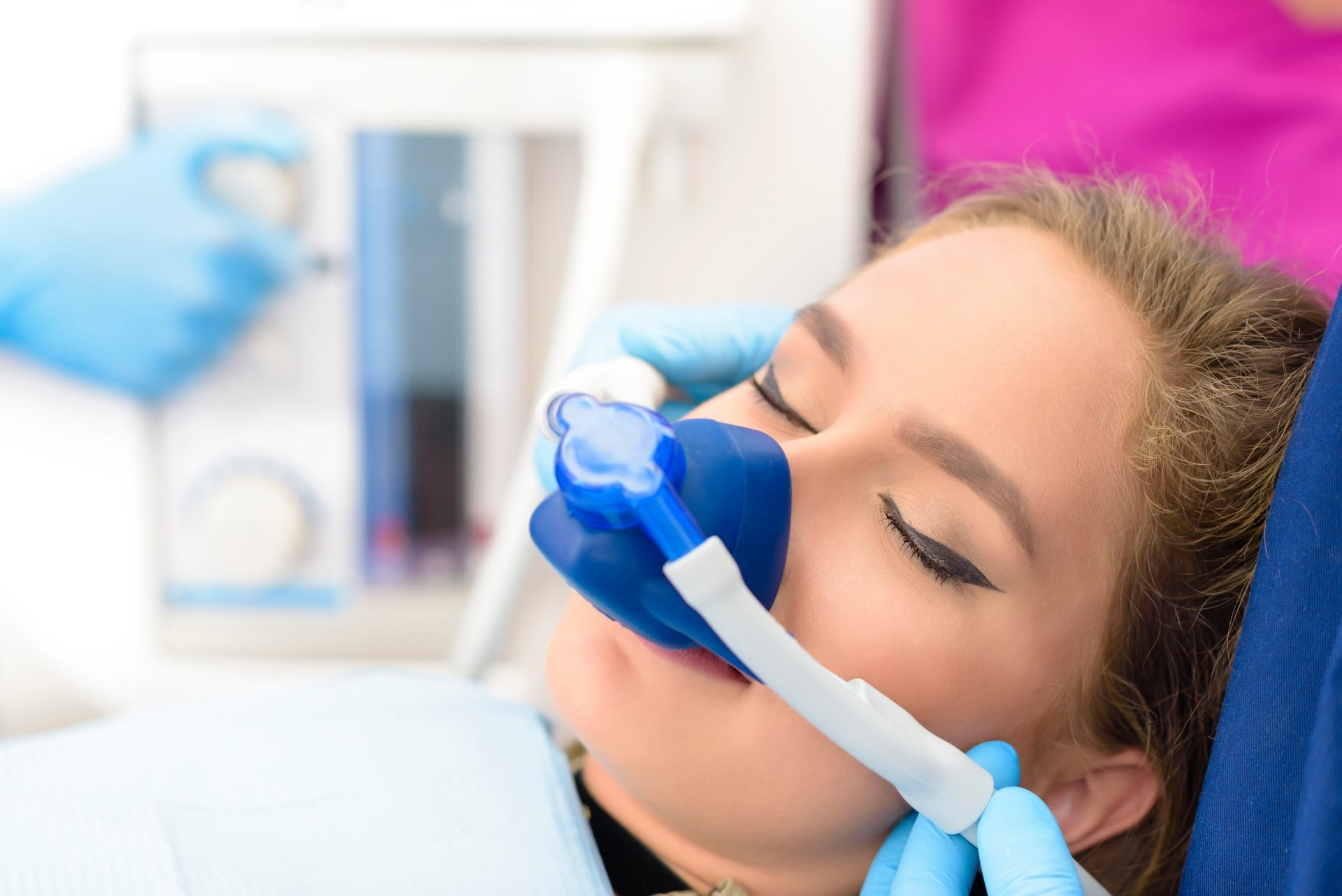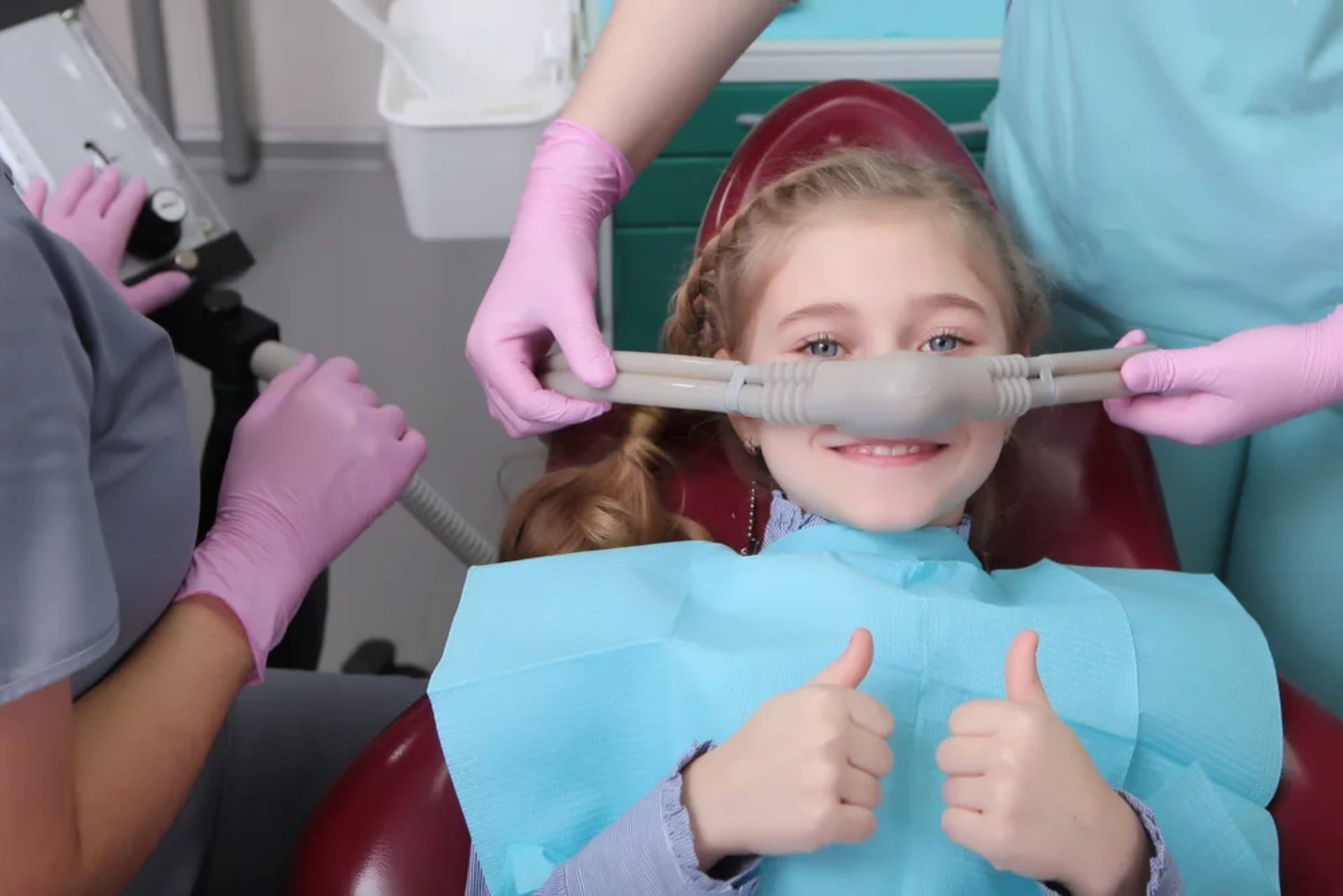Sedation Dentistry: What Is It, Who Can Take It, and the Different Types You Can Get

If the thought of a dental visit makes your heart race, sedation dentistry might be exactly what you need. It’s a safe and effective way to help patients feel calm and relaxed during dental procedures. Unlike general anesthesia, which knocks you out completely, sedation dentistry keeps you in a peaceful, dreamlike state—still awake, but without the stress.
These medications work by easing anxiety and making you less aware of what’s happening during dental procedures. You won’t feel pain, but your dentist will still use local anesthesia to numb the treatment area to help you get a smoother, stress-free experience.
Types of Sedation Used in Dentistry
Sedation comes in different levels, depending on what you need. Minimal sedation just takes the edge off while keeping you fully alert. Moderate sedation (sometimes called “twilight sleep”) makes you drowsy but still able to respond. Deep sedation brings you to the edge of sleep, while general anesthesia puts you completely under.
Most patients who choose sedation dentistry stay in the mild to moderate range. That’s why it’s often called “sleep dentistry.” You’re not actually asleep—you’re just in a carefree, relaxed state. Here are the different types of sedation you’ll see in sedation dentistry.
Nitrous Oxide (Laughing Gas)
Nitrous oxide is a mild sedative that helps patients relax while staying awake. You breathe it in through a small mask, and within minutes, you feel calmer. The effects wear off quickly once the gas is stopped, so you can usually drive home after your appointment. It’s safe for both kids and adults and is commonly used for minor treatments.
Oral Sedation
Oral sedation involves taking a pill (or liquid for kids) about an hour before your procedure. It can make you feel drowsy or even lightly doze off, but you’ll still be able to respond. Since the effects last for several hours, you’ll need someone to drive you home, and you should take the rest of the day to rest.
IV Sedation
IV sedation is given directly into your bloodstream, so it works almost instantly. It provides a deeper level of sedation, and many patients don’t remember much of the procedure. Since it can be adjusted as needed, it’s a great option for people with severe dental anxiety or those having long procedures. The effects last, so you’ll need someone to take you home.
General Anesthesia
General anesthesia puts you into a deep sleep, making you completely unaware of the procedure. It’s usually used for complex surgeries, young children, or patients with special needs. Because it requires special monitoring and a longer recovery, it’s done in a hospital or surgery center. Afterward, you may feel groggy for several hours and will need someone to drive you home.
Quick Comparison of Sedation Options
Sedation can make dental visits much easier for those with anxiety or long procedures. Your dentist can help you choose the best option for your needs.
| Sedation Type | Takes Effect In | Awake? | How Long It Lasts | Recovery |
| Nitrous Oxide | 3–5 minutes | Yes, but relaxed | Only while inhaling gas | Wears off quickly; can drive home |
| Oral Sedation | 30–60 minutes | Drowsy, might nap | Several hours | No driving; rest for the day |
| IV Sedation | Under 1 minute | Very drowsy, minimal awareness | Adjustable during procedure | No driving for 24 hours; full recovery next day |
| General Anesthesia | Seconds to minutes | Fully asleep | Until anesthesia stops | Groggy for hours; full rest needed |
Safety Considerations of Sedation Dentistry
 Sedation dentistry is safe when performed by a trained professional. Your dentist will check your medical history and monitor vital signs during the procedure to ensure your safety. However, like any medication, sedation can have some side effects.
Sedation dentistry is safe when performed by a trained professional. Your dentist will check your medical history and monitor vital signs during the procedure to ensure your safety. However, like any medication, sedation can have some side effects.
Drowsiness after the procedure
- Dry mouth
- Nausea or vomiting
- Headache
- Minor bruising (if IV sedation is used)
Sedation for Different Age Groups
Sedation is used for patients of all ages but requires special adjustments based on age and health.
Children:
- Often given nitrous oxide or mild oral sedatives
- May experience irritability, snoring, mild fever, or nausea
- Dosage is based on weight, and children are monitored closely
Pregnant Women:
- Usually avoided, especially in the first trimester
- Nitrous oxide may be considered in the second trimester if necessary
- Most sedated procedures are postponed until after birth
Older Adults:
- Sedatives may take longer to wear off, leading to prolonged drowsiness
- Smaller doses are often used to prevent confusion or balance issues
- Recovery may take longer, and medical conditions are considered before sedation
Medical Conditions That Require Extra Caution
Some health conditions may affect how sedation works, so adjustments may be needed.
- Respiratory issues (Asthma, COPD, Sleep Apnea): Sedation can slow breathing, so extra precautions may be necessary.
- Heart conditions (Recent heart attack, unstable angina, high blood pressure): Some sedatives can affect heart rate and blood pressure.
- Obesity & Sleep Apnea: These increase the risk of airway blockage under sedation.
- Allergies to Sedatives or Anesthesia: Let your dentist know if you’ve had past reactions.
Pros and Cons of Using Sedation During Dental Procedures
Using sedation can transform the dental experience for anxious patients, but it also comes with considerations. Below is a breakdown of the advantages (pros) and disadvantages (cons) of sedation dentistry:
Pros (Benefits)
- Sedation can make dental visits easier and more comfortable, especially for patients with anxiety or those needing extensive treatment.
- Reduces Anxiety and Fear – Helps nervous patients stay calm and prevents panic attacks, making it easier to get necessary treatment.
- Increases Comfort – Dulls awareness of sounds, pressure, and movement, making procedures feel shorter and less stressful.
- Helps Control Gag Reflex and Movement – Reduces gagging and restlessness, allowing the dentist to work more efficiently.
- Allows More Treatment in One Visit – Lengthy or multiple procedures can be completed in one session, saving time and reducing overall visits.
- Alters Pain Perception – While not a painkiller, sedation helps reduce discomfort and makes the experience feel less intense.
- Encourages Better Oral Health – Makes it easier for people who avoid the dentist to get treatment, preventing small problems from turning into serious issues.
Cons (Disadvantages)
While sedation makes dental visits easier, it also comes with costs, side effects, and some risks.
- Extra Cost – Sedation adds to the total bill, and most insurance plans don’t cover it unless there’s a medical reason. Prices vary, with nitrous oxide being the most affordable and IV sedation or general anesthesia costing significantly more.
- Recovery Time & Inconvenience – Except for nitrous oxide, sedation can leave you groggy for hours. You’ll need someone to drive you home, and you may need to take time off work or school.
- Possible Side Effects – Some people experience nausea, dizziness, headaches, or mild soreness at the IV site. These effects usually fade within a few hours but can be unpleasant.
- Small Risk of Complications – While rare, too much sedation can cause breathing issues or low blood pressure. Patients with sleep apnea, heart conditions, or sedative allergies need extra caution.
- Limited Availability & Necessity – Not all dentists offer sedation, and in some cases, it may not be needed. Alternative relaxation techniques can work for mild anxiety without the added cost or medication.
Typical Costs of Sedation and Insurance Coverage
The cost of sedation depends on the type used and the length of the procedure. Here’s a general price range:
- Nitrous Oxide (Laughing Gas): $50–$150 per session
- Oral Sedation (Pill): $150–$500 per appointment
- IV Sedation: $500–$1,000 per appointment (sometimes charged hourly)
- General Anesthesia: $1,000–$3,000+ (includes anesthesiologist fees and facility costs)
Prices vary by location and provider, but sedation always adds an extra cost to your dental treatment.
Does Insurance Cover Sedation?
Most standard dental insurance plans do not cover sedation if it’s for patient comfort or anxiety relief. Insurers usually classify it as an elective add-on rather than a necessary treatment. However, some exceptions exist:
- Medical Conditions: If a patient has a disability, severe anxiety disorder, or a condition like epilepsy or autism that makes sedation necessary, insurance may cover part of the cost.
Major Surgery or Young Children: Insurance is more likely to cover sedation for complex dental surgeries or kids who can’t tolerate treatment while awake. - Cost-Effective Treatment: In rare cases, insurance may approve sedation if it reduces overall costs (e.g., completing multiple procedures in one visit instead of several).
How to Check Your Coverage
Always call your insurance provider to ask if sedation is covered for your situation. If it’s not, many dental offices offer payment plans or financing to help manage the cost.
If you want to ask specific questions about insurance or financing for sedation dentistry, you can call our office and we’ll be more than happy to answer!
Who Is Sedation Dentistry Recommended For?
 Sedation can make dental visits easier for people who struggle with discomfort, fear, or medical conditions that make treatment difficult. Dentists often recommend it in certain situations.
Sedation can make dental visits easier for people who struggle with discomfort, fear, or medical conditions that make treatment difficult. Dentists often recommend it in certain situations.
Patients with Dental Anxiety or Phobia
For those who feel intense fear about dental visits, sedation provides a way to stay calm and receive treatment without distress. Many people with dental anxiety tend to delay or avoid care altogether, which can lead to more serious oral health problems. By easing nervousness, sedation allows them to get necessary treatments in a more comfortable, stress-free manner.
Fear of Needles or Gag Reflex Issues
Some people aren’t afraid of dental procedures themselves but struggle with the thought of injections. Sedation can relax the body and mind, making numbing shots far less stressful. It can also help patients with a strong gag reflex, which can make X-rays, impressions, and even routine treatments difficult. By suppressing the gag reflex, sedation makes these procedures easier for both the patient and the dentist.
Extreme Tooth Sensitivity or Difficulty Getting Numb
For patients with highly sensitive teeth or those who struggle to get fully numb with local anesthesia, sedation can help by raising pain tolerance and promoting relaxation. This makes dental treatments feel more comfortable and reduces the risk of discomfort during procedures.
Patients Undergoing Long or Complex Procedures
Certain dental treatments, such as multiple extractions, oral surgery, or full-mouth restorations, require extended time in the chair. Staying still for long periods can be challenging, especially for those with anxiety or difficulty tolerating discomfort. Sedation allows patients to remain relaxed throughout, making long procedures much easier to handle.
People with Movement Disorders or Special Needs
Patients with conditions like Parkinson’s disease, cerebral palsy, autism, or severe ADHD may have difficulty staying still for treatment. Involuntary movements can make dental care more complicated, but sedation helps by relaxing the muscles and minimizing these reflexes. This ensures a safer and more manageable experience for both the patient and the dentist.
Children with High Anxiety or Extensive Dental Needs
Pediatric dentists often use sedation for children who are too young to tolerate treatment or who experience high levels of fear. In cases where a child needs multiple procedures or has extensive tooth decay, sedation can make the experience less frightening and more manageable. Depending on the situation, this could range from mild sedation with laughing gas to deeper sedation for more complex treatments.
Claustrophobic or Highly Sensitive Patients
Some people feel trapped in the dental chair or overwhelmed by the sounds, vibrations, and smells of dental procedures. For these patients, sedation can ease feelings of claustrophobia and dull their sensitivity to stimuli, making the experience more tolerable.
Patients with a History of Traumatic Dental Experiences
People who have experienced painful or distressing dental visits in the past may develop a psychological aversion to treatment. Sedation can help break this cycle by ensuring a smooth, pain-free visit, allowing them to regain confidence in dental care.
Even patients without extreme anxiety sometimes choose mild sedation for particularly uncomfortable procedures. The goal is to create a stress-free, comfortable experience so you can get the care you need without fear or discomfort.
Key Takeaways
Dental anxiety is a pressing concern that many of our Washington patients have. It’s a safe and simple way to ease anxiety, keep procedures stress free, and ensure you stay comfortable throughout your visit.
If you’re looking for a sedation dentist near West Seattle, Alki Dental can help you find the best sedation type for your specific needs. Schedule a stress-free dental visit with us today!

